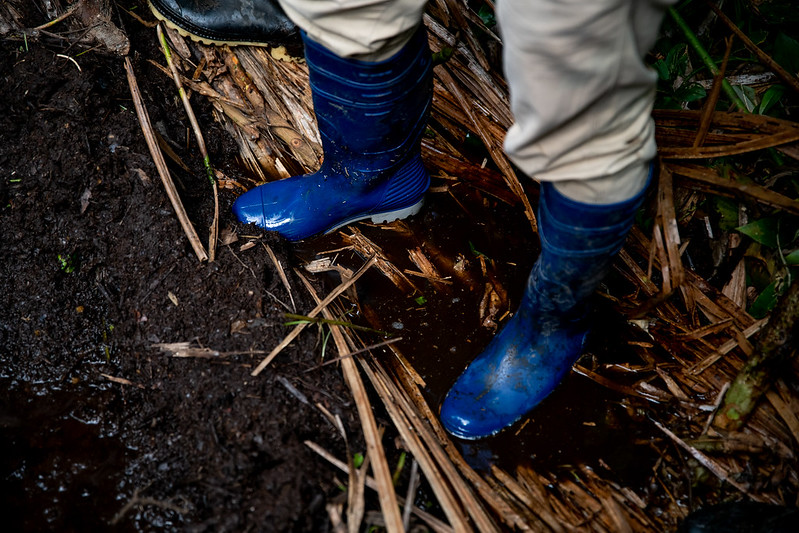One may picture the aviation or shipping sectors when thinking about climate change. However, one of the most overlooked sources of emissions is the human-inflicted degradation of peatlands. This produces more emissions than the aviation and shipping sectors, with five per cent of all anthropogenic greenhouse gas emissions. To protect our health, biodiversity and climate and reach global goals, it is crucial to address the covert drainage of peatlands.
The UN Water Conference earlier this year showed that these lands are still not high on the political agenda. However, the upcoming United Nations General Assembly (UNGA) and this year’s World Food Day, centred around the connection between water and food, provide new opportunities to make progress.
What are peatlands? Why do they matter?
Peatlands form over the course of thousands of years from the slow accumulation of organic material, such as leaves, stems and roots, which cannot be decomposed due to waterlogged conditions. This causes the creation of large swamps which store tonnes of carbon.
Although they store twice as much carbon as forests, the world has not treated these lands well. Ten per cent of global peatlands have already been drained. This drainage causes the organic material in peatlands to start rotting, releasing CO2, and making them prone to wildfires, which can accelerate even further the emissions of greenhouse gasses. In addition, peatlands are like a sponge, mitigating floods and droughts.
Despite their high share of emissions and their additional benefits, funding for peatland restoration and protection has not been made a priority in global policy processes in the past. The massive 2015 fires in Indonesia’s peatlands showed the consequences of this lack of international attention. In that year, 52 per cent of the Indonesian wildfires were on peat and, when the fires were raging, they emitted more greenhouse gasses daily than the average daily emissions of the whole economy of the United States.
Taking action for peatlands
Peatlands are starting to get more and more attention, however. The Global Peatlands Initiative has been created to gather knowledge to improve our understanding of these environments, including an ambitious attempt to map them across the world. From Peru to Indonesia, policymakers have also set up programs to restore peatlands. Yet, they are still drained on a large scale. The discovery of the world’s biggest peatland in the Congo Basin in 2017 showed that our knowledge of these important ecosystems is limited. These new discoveries also reiterate the expanding relevance of sound management strategies for peatlands.
Unfortunately, recent global conferences have not reflected on how we are managing the water levels of our largest terrestrial carbon stocks: draining our peatlands further, for instance. Only two out of the 814 commitments of the UN Water Action Agenda mention peatlands.
An often missing concept in peatland restoration and protection is the recognition of the ecosystem services that they provide. A good example is United Utilities, a drinking water company, that set up a sustainable catchment management programme. The initiative blocked 320 kilometres of canals and re-vegetated more than 10,000 hectares of peatlands. The company saw the value of healthy peatlands, which could help turn the current coloured water into clear water again, and decided to pay for the services of the peatlands. Recognising the economic value of these services could incentivise the protection of this crucial carbon stock more widely.
Next steps
Though protecting peatlands is an important step as underlined by the Ramsar Convention, it has been a challenging task. A wider, watershed and landscape view is needed since peatlands depend on water coming from nearby basins, and are also affected by the different activities taking place in surrounding landscapes. The Global Commission on the Economics of Water has shown that water systems are more interconnected than previously thought. A bog land, for instance, can be dependent on the evaporation and the subsequent rainfall from the forests closer towards the coasts. The commission, therefore, argues that the world should see water as a “global common good”. It also calls for new public-private partnerships to accelerate investments to safeguard crucial ecosystems like peatlands.
The jury is still out on how to translate the commission’s recommendation on “seeing water as a global common good” into practice. The commission will give its final recommendations later this year. A first glimpse of this was seen at the UN Water Conference in March which saw a momentum of new countries to join existing conventions. For example, Niger joined UNECE Convention on the Protection and Use of Transboundary Watercourses and International Lakes. The Netherlands rallied so much about the commission’s work that a move for a new global convention on water seems plausible. If the world continues to neglect peatlands, global climate and biodiversity targets will slip out of reach. This year’s remaining opportunities for collaboration – UNGA, World Food Day and COP28 – can be the starting point of new water agreements. They can see water as a global common good and move away from draining to preserving peatlands.
Header image: Junior Raborg/CIFOR-ICRAF



